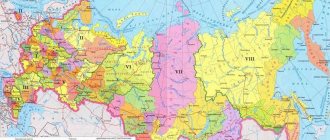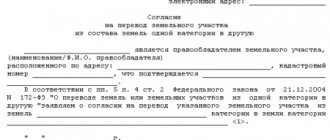Industrial lands are zones located outside the boundaries of populated areas. In these places, the soil is most often not fertile, as it is intended for the construction of industrial zones. They are intended for legal entities and industrial equipment buildings. In industrial areas, factories, production facilities, warehouses, factories and other buildings are built for the activities of various enterprises. The use of such areas is different, therefore the legislation established 7 categories of land of this type of territory.
- Land for the location of production facilities and structures.
- Land plots allocated for the search for natural resources.
- Territory for the development of transport links.
- Areas designated for the purpose of placing nuclear power items.
- Areas of protection and safety.
- Areas for various types of communications.
- To prepare for space tests.
Registration of agricultural zones for industrial facilities is carried out through an application to the district administration. The rationality of the buildings and the proximity of the location to roads and populated areas are determined.
It is not allowed to build industrial zones near residential buildings
What it is?
Industrial lands are land plots that are used by industrial enterprises or ensure the operation of their facilities for their intended purpose.
Industrial lands include areas recognized as unsuitable for agricultural activities, or areas with products of poorer quality or lack of fertile soil to begin with. This is the main reserve for the growth of industrial complexes.
Important! Industrial lands are located outside populated areas. A special sanitary zone is determined on their territory, and private lands located within their boundaries can be used by owners only subject to compliance with established restrictions.
Lands for industry and special purposes, which include areas for industry, are also divided into plots for space activities, energy, defense and security, transport and communications, which you can read about in our articles.
Industrial land tax
According to Art. 394 of the Tax Code of the Russian Federation, the tax rate on industrial land is 1.5% of the cadastral value of the site.
This rate is higher than for agricultural land and residential areas. But at the regional level, reducing coefficients can be introduced.
Land for industrial purposes is often set at an inflated cadastral value, which may exceed the market value. If this fact is revealed, the owner has the right to go to court to reduce the cadastral value.
What is classified as industrial land?
In relation to Art. 88 of the Land Code of the Russian Federation, industrial lands include areas that are used or intended for:
- mineral extraction services provided by mining and oil and gas industry enterprises;
- enterprises of the chemical, manufacturing, metallurgical industries;
- lands occupied by factories, factories, quarries, mines, mines, mines;
- placement of industrial and administrative buildings, structures, structures and facilities serving them, in order to ensure the activities of organizations and the operation of industrial facilities.
Industrial lands: what is it?
Industrial lands are territories that are located outside populated areas and are intended to support the production activities of legal entities, as well as for the purpose of operating industrial equipment. On industrial lands there are workshops, premises of plants and factories, buildings for the administration of production and other buildings necessary for the operation of enterprises.
A detailed description of industrial lands is contained in Chapter 16 of the Land Code of the Russian Federation. It also regulates the organization of production in such territories. In some questions you can rely on Art. 7 and art. 78 of the Land Code of the Russian Federation, as well as local legislation.
The purpose of using industrial plots can be different, so the law has identified seven possible types of permitted use of such land.
- Sites for the placement of production facilities and buildings.
- Territories intended for mining.
- Land to provide transport links.
- Areas intended for the location of nuclear energy facilities.
- Territories of defense and security.
- Areas for placing various communications.
- Lands intended for space activities.
The transfer of land plots for industrial production occurs through the local administration. At the same time, the feasibility of the production location, the characteristics of the land and topography, as well as the proximity of the site to transport routes and populated areas are assessed.
Industrial land cannot be located near objects intended for housing.
What area can land for industrial development have? This depends on the type of permitted use, production standards (they are individual for each industry), as well as on the technical documentation for a specific industrial development site.
The economy is developing rapidly, so there is a shortage of industrial land. This problem is solved by changing the category of land plots.
Legal regime and position
The legal regime of industrial lands is a system of legal regulation of relations for the protection and use of these lands , aimed at ensuring the operation of industrial facilities.
Regulations are a set of established norms and rules that must be followed. The production activity of an industrial enterprise is a source of increased danger. The uniqueness of the legal regime of industrial lands is the establishment of sanitary protection zones, the purpose of which is to ensure the safety of the population and the environment from industrial waste.
Art. 42 of the Land Code of the Russian Federation obliges industrial enterprises:
- use land plots only for their intended purpose using methods that should not harm the environment;
- preserve geodetic, boundary and other special signs that are installed on land plots;
- implement measures to protect lands, forests, water bodies and other natural reserves, including fire safety measures, to prevent pollution, depletion, degradation, damage, and destruction of lands and soils;
- start using land plots in a timely manner (under a lease agreement);
- make timely payments for land.
What facilities can be built on industrial land?
As mentioned above, you can build those objects that correspond to the intended purpose of a particular site. Residential buildings may not be built on any industrial land. However, the growth of cities leads to the fact that residential areas often intersect areas classified as industrial. Over time, this can cause problems. To avoid them, it is necessary to change the category of the land plot. If the land belongs to a populated area or agricultural area, then such a plot can be used for urban construction. But you still need to look at the specific type of permitted use of such areas.
Who is the owner?
The owners of the plots can be:
- Individuals.
- Legal entities.
- Federal government.
- Regional government.
- Municipalities.
Attention! Land plots within which there are mineral deposits cannot be privately owned. Deposits in the Russian Federation are state property. Therefore, such lands can only be provided on the basis of the right of use, including lease.
Sale, purchase, lease of industrial land
The owner of an industrial site can be either the state or municipality, or a private person or organization. The owner has the right to make any transactions with these territories that do not go beyond the current legislation.
Plots with industrial facilities can be sold, leased, given for free use, donated, exchanged.
When purchasing such land, the established type of permitted use should be taken into account. So, if the site is intended to accommodate warehouses, then the owner or tenant will not be able to build objects for other purposes on this territory, for example, a gas station for cars.
Also, a potential buyer should pay attention to the characteristics of the land plot itself and the presence/absence of communications. If gas, electricity, water supply, and sewerage are not supplied to the site, then such land can be inexpensive.
However, if you think about the prospects for construction in the future, then purchasing an industrial zone plot may turn out to be unprofitable: obtaining construction permits and supplying communications is a rather lengthy, labor-intensive and costly process.
Types of permitted and prohibited use of land plots
Types of permitted use of land plots that are not subject to urban planning regulations are determined on the basis of the State Real Estate Cadastre.
The State Real Estate Cadastre is a collection of information about registered real estate and the State borders of settlements, municipalities, and zones with special operating conditions. Order of the Ministry of Economic Development of Russia dated September 1, 2014 No. 540 “On approval of the classifier of types of permitted use of land plots” approved the corresponding classifier containing a list of permitted types of use, including codes for them, which are applied throughout the Russian Federation. Industry, codes 6.2.- 6.6.:
- heavy 6.2. (mechanical engineering, metallurgy, mining, when it is necessary to introduce special zones);
- easy 6.3. (production of textiles, clothing, ceramics);
- food 6.4. (baking, drinks, canning);
- petrochemical 6.5. (processing of raw materials, household chemical products);
- construction 6.6. (production of bricks, cement, elevators, fasteners).
Reference. According to Art. 14 of the Land Code of the Russian Federation, land plots that have been contaminated by chemical or radioactive substances, as well as the structures located on them, are used in the manner determined by the Government of the Russian Federation.
On such lands and land plots the production and sale of agricultural products is prohibited .
Failure to comply with the law will result in fines and penalties.
Advantages and disadvantages
The advantages of developing summer cottages with houses are as follows::
- the house is located in a picturesque and environmentally friendly place;
- the lands are highly fertile;
- here you can lay out a garden, plant a vegetable garden;
- grown agricultural products will help in the economy;
- the family can spend weekends and vacations on the site;
- the cost is lower than the land plot for individual housing construction;
- the house is registered according to a simplified system;
- According to the decision of the summer resident, the house may not be built.
The disadvantages of construction in holiday villages include the following circumstances::
- The memory cannot be used for purposes not related to gardening;
- ownership is only joint - dependence on co-owners;
- dependence of all actions on the legal entity and statutory provisions;
- These territories are not intended for permanent residence;
- water and electricity are seasonal only;
- there is no heating system;
- infrastructure is not developing;
- permanent residence permit and registration - only by decision of the administrative commission;
- If there is no postal address, registration is impossible.
In order for the acquisition of agricultural land to meet the buyer’s expectations, one must proceed from the opportunities and positive characteristics that they provide when used for their intended purpose. That is, purchase them not for permanent residence, but for recreation outside the populated area and for growing a garden.
Important . If you need to build a permanent house for permanent residence, you should purchase land for individual housing construction from the category of land in settlements.
Construction of production facilities
What can and cannot be built?
Allowed to build:
- industrial buildings (plants, factories, production workshops);
- cultural and community premises (sanitary, medical, educational institutions, public catering premises);
- other structures (warehouses, utility rooms);
- water bodies (ponds, pools with retaining structures on water outflows).
Forbidden:
- individual residential buildings (residential buildings, apartments);
- personal subsidiary farming (vegetable gardens: growing agricultural products);
- country buildings (baths, woodsheds, sheds);
- other structures that contradict the intended purpose of the land plot (animal enclosures).
Important! If residential development takes place in an area with restrictions on the exploitation of the site, it is possible to change the category of land from industrial to agricultural land or populated areas.
What is required for construction?
According to Federal Law No. 218-FZ dated July 13, 2015 “On State Registration of Real Estate,” the following documents are required for the construction of a facility:
- A document establishing the right to own a plot of land.
- Technical plan of the land plot.
- Construction permit (issued according to the documents of paragraphs 1 and 2, issued by the local government body at the location of the site - part 4 of article 51 of the Civil Code of the Russian Federation).
- Technical plan of the structure.
What can be built on industrial land?
Construction of facilities on industrial land plots is permitted if this does not contradict the type of permitted use of the territory. It is prohibited to build residential buildings on such sites.
However, cities and rural settlements are growing from year to year. It often happens that residential development crosses an industrial zone. Until some time, problems with the law may not arise, but what if the enterprise that owns industrial land decides to expand production or conduct additional communications?
Legally, there is one way out of this situation - changing the category of the land plot. For example, residential development is possible if the territory is classified as agricultural land or populated areas.
An important point - when changing the category of land, pay attention to the type of permitted use. The possibility of housing construction directly depends on this.
Management and monitoring
Art. 67 of the RF Land Code provides for state monitoring of lands. The effectiveness of the management activities of an industrial enterprise directly depends on timely and reliable information about the functioning and economic condition of the organization.
Attention! Monitoring as a means of obtaining statistically reliable information and drawing up short-term and long-term forecasts is necessary for high-quality management of the process of sustainable development of an enterprise.
Industrial land monitoring allows you to:
- predict profitability;
- innovative development;
- solvency and liquidity;
- determine financial stability;
- business activity of the enterprise.
In addition, land monitoring motivates industry; timely strengthening of vulnerable areas helps prevent errors , which contributes to the development of the enterprise.
Accompanying procedures and documentation
To start construction, you need to purchase a plot of land in SNT . This can be done by contacting one of the existing dacha partnerships with an application to the board of SNT, DNT DNP. The board has information about vacant plots offered for sale. Here you will find the coordinates of dacha sellers who should be contacted to view and select a suitable plot.
The buyer must have only a civil passport. In some cases, they contact the administration of a locality with an application to purchase land plots on agricultural lands for the formation of a summer cottage and the construction of a house.
After the plot has been purchased in a holiday village, you need to obtain:
- a receipt (receipt) for depositing money for the purchase of the memory;
- agreement to purchase a share of land property;
- minutes of the general meeting on the acceptance of the new owner as a member of the Partnership;
- membership book of the Partnership.
With these documents you need to contact Rosreestr or the MFC to register the acquisition of land by paying a fee of 350 rubles. An exception is when the lands of the holiday village are not owned, but leased from a legal entity . In this case, registration of a land plot on which a country house is not built is not required.
The resulting plot must be registered with the cadastral register and have a general cadastral passport, which is kept by the chairman of the board. For citizen landowners, internal land surveying must be carried out, and the boundaries of each plot must be fixed by a land surveying project.
If the right to lease agricultural land for a summer cottage is purchased from the administration, the plots are prepared and already have boundary boundaries. As a result of the auction, the interested party receives :
- protocol on the results of the auction;
- administrative act on the allocation of land plots;
- rent receipt.
With these documents and a passport, you need to go to Rosreestr or MFC, paying a fee of 2,000 rubles. Write an application for registration of rental rights, attach a package of documentation. After registration, you will receive a cadastral passport of the land plot and an extract from the Unified State Register of Rental Rights.
Having completed the design of the site, you can begin building a country house . If a house is being built in SNT, then the board must have a master plan for the development of the holiday village. In it, based on the survey project, the development parameters that must be followed are indicated.
The master plan for the development of the village must first be approved by the chairman of the board of administration. If the site was purchased from the administration, the construction permit is approved here.
Reference . According to the norms of the town planning code, it is not necessary to draw up a construction project for a house lower than three floors.
Additionally, SPOZUs are prepared if utility lines need to be installed:
- gas;
- electricity;
- water supply and sewerage.
SPOZU are prepared on the basis of geodetic documentation, which is prepared as a result of topographic survey of the site. It is also advisable to use this survey to select a place to build a house so that the foundation does not sag due to nearby groundwater.
After the construction of a house, it must be registered with Rosreestr by writing an application, attaching documentation permitting its construction and a package of documentation for the land. A state duty of RUB 2,000 must be paid in advance. The registration period is within one month.
Methods of state cadastral valuation
Decree of the Government of the Russian Federation dated April 8, 2000 No. 316 “On approval of the Rules for conducting state cadastral valuation of land”, clauses 6.1. – 6.3. establishes the assessment procedure for industrial lands:
- Determination of specific indicators of the cadastral value of land plots: calculated based on the values of specific indicators of the cadastral value of land plots of the category and (or) type of use bordering the specified land plots.
- Calculation of the cadastral value of land plots: determined by multiplying the specific indicators of the cadastral value of the specified land plots by their area.
Cost calculation
Cadastral value is a conditional monetary value, intended mainly for calculating tax. Cadastral registration in the Russian Federation is regulated by the laws “On cadastral activities” dated July 24, 2007 No. 221-FZ and “On state registration of real estate” dated July 13, 2015 No. 218-FZ.
An example of calculating cadastral value.
Calculation of KS is a complex process. You can preliminary estimate the CS of a site using a simplified formula:
KS=PL*(KI+KL)*KP , where:
- KS (rub.) – cadastral value.
- PL(m2) – area of the plot.
- KI, KL (rub./m2) – infrastructure and specificity coefficients.
- KP – transition coefficient.
According to the regulations of Rosreestr, the calculation of the KS of land plots is carried out at least once every 5 years and no more often than after 3 years. The necessary coefficients for preliminary calculation can be obtained from professional appraisers.
Transfer of industrial lands into state ownership
There are situations when industrial land is needed for the construction of government facilities or other needs of the state. In this case, they may be confiscated. The law allows seizure in the following cases:
- To implement international agreements;
- For the construction and reconstruction of federal and local transport system facilities, energy infrastructure, security and defense;
- According to the court order;
- In other cases, if they do not contradict federal law.
The procedure for the transfer of industrial lands into state ownership is determined by articles of the Land Code No. 49-51. In addition to the complete termination of an individual’s ownership rights to such plots, the law allows for its temporary restriction. But such a measure is applied only in special cases. The owner is subsequently returned the site and is also paid compensation for its use.
Is it possible to rent or transfer into ownership and under what conditions?
The following agreements may apply to industrial lands:
- purchases and sales;
- rent;
- free use;
- donations and other permissible agreements relating to real estate.
- no impact on industrial lands is possible if international agreements are implemented;
- reconstruction or construction of federal (local) defense, security, energy, transport and other communications facilities is taking place;
- if the plot is seized in accordance with a court order;
- in the presence of other justified reasons that do not contradict federal legislation.
Features and rental procedure
Renting from a private person:
- Find an owner with a suitable land plot.
- Determine the subject of the relationship, price, rental period and sign the agreement in 2 copies for each party. If the lease exceeds 12 months, registration is required with Rosreestr.
Renting from the municipality:
- Submit an application to the administration that owns the land.
- Submit an application to participate in the auction.
- Make a fixed deposit, which is returned if you lose at the auction.
- Sign the appropriate agreement with the municipality.
Required documents:
- Identity document for an individual.
- Extract from the Unified State Register of Individual Entrepreneurs or the Unified State Register of Legal Entities for individual entrepreneurs and legal entities.
- Application in the prescribed form.
- Cash document confirming payment of the deposit.
For registration in Rosreestr:
- Application from the landlord.
- Resolution of the administration on the allocation of the site.
- Tenant's identification documents.
- Three signed copies of the agreement.
- Constituent documents for the land plot.
- Receipt for payment of state duty.
How to change the category of industrial land?
Issues related to changing the category of land plots are regulated by the Land Code and Federal Law No. 172 of December 21, 2004.
Converting land to industrial use is not an easy procedure. It is much easier to make the reverse change.
For example, when transferring an industrial zone to the category of settlements, there are only 2 restrictions:
- Objects of the industrial zone are subject to demolition, or the territory is polluted or disturbed. In these cases, a remediation project is required to change the category. The same feature applies to situations where the area is polluted or disturbed.
- The soil layer on industrial lands has been disturbed. In this situation, it will be necessary not only to coordinate the reclamation project, but also to carry out all the proposed work.
It is much more difficult to convert agricultural land into industrial land . This is permitted only in exceptional cases.
The only basis for allowing a change in category is the provision of evidence of the complete loss of the agricultural plot of useful properties necessary for conducting agricultural activities.
The procedure for transferring agricultural land to industrial land is a rather lengthy process. Registration of permits for transforming the intended use of land takes more than 6 months.
It should also be taken into account that this procedure is associated with significant material costs, including payment of state fees for the issuance of cadastral documents and compensation to the state for losses in connection with the transformation of the legal regime of agricultural land.
To obtain permission to transfer, you must contact the local government with an application and supporting documents. If the plot is used by lease, then to change the category of land you still need to obtain permission from the owner of the property.
List of documents for changing the legal status of a land plot:
- petition for the need to change the intended purpose of the land plot (the form can be obtained directly from Rosreestr or downloaded from the website of this service);
- boundary plan of the site;
- cadastral passport;
- title document;
- permission to transfer land to another category, issued by the local administration.
The application and documents are reviewed within 10 days, after which the applicant receives a decision to transform the category of land or a refusal.
If the municipality makes a positive decision, a written appeal must be sent to the Ministry of Property Relations regarding the transformation of the intended purpose of the site and the possibility of placing an industrial facility on it.
After 2 months, the applicant will be issued a decision granting the right to transfer the land property to another legal regime.
Within 2 weeks, a copy of this decision will be sent to the applicant and Rosreestr. The procedure is completed by entering information about the transfer of agricultural land to the industrial category.
Package of documents for submission to Rosreestr:
- permission from the administration;
- project for the location of an industrial facility on a land plot;
- boundary plan;
- technical characteristics of the structure;
- conclusion of the environmental commission;
- cadastral documents for land;
- soil restoration project;
- economic feasibility study for the construction of an industrial facility;
- certificates of state costs associated with the transfer of land.
The list of documents may be supplemented depending on the regulations adopted in a particular region.
According to statistics, a positive decision on the issue of transferring agricultural land to industrial areas is made if the land plot is sufficiently remote from populated areas.
What does this mean and what could be the consequences?
When performing any actions with land, you must be sure of its category unconditionally, otherwise the rights and obligations of the owner associated with this site may be challenged, and the property owner may suffer.
May be recognized:
- illegal - the decision to allocate a land plot;
- inappropriate - legal regime of use;
- invalid - contracts related to the site.
If a land owner submits documents to register a plot without a confirmed category, he will be denied registration .
The ability to carry out any actions with the land will be limited.
It will become impossible:
- re-register it;
- obtain permission to begin construction;
- legitimize the completed;
- use the site in some way, etc.
There will be problems with determining the subject of law.
In addition, if there is no category of land, it means that there is no intended purpose for the site; it can be classified as a reserve fund .
Undesirable consequences of uncertainty in the category of land arise not only for the owner, but also for the state. The owner does not dare to use the land as planned, since there is no permission for this, which means he does not pay tax on the cadastral value of the plot, etc.








